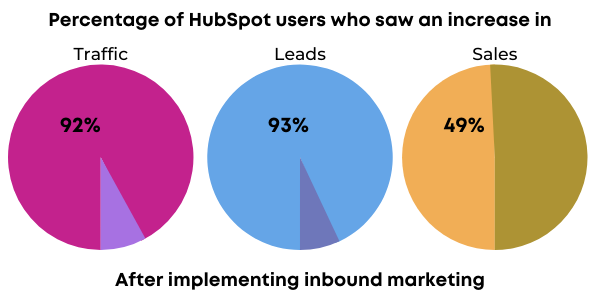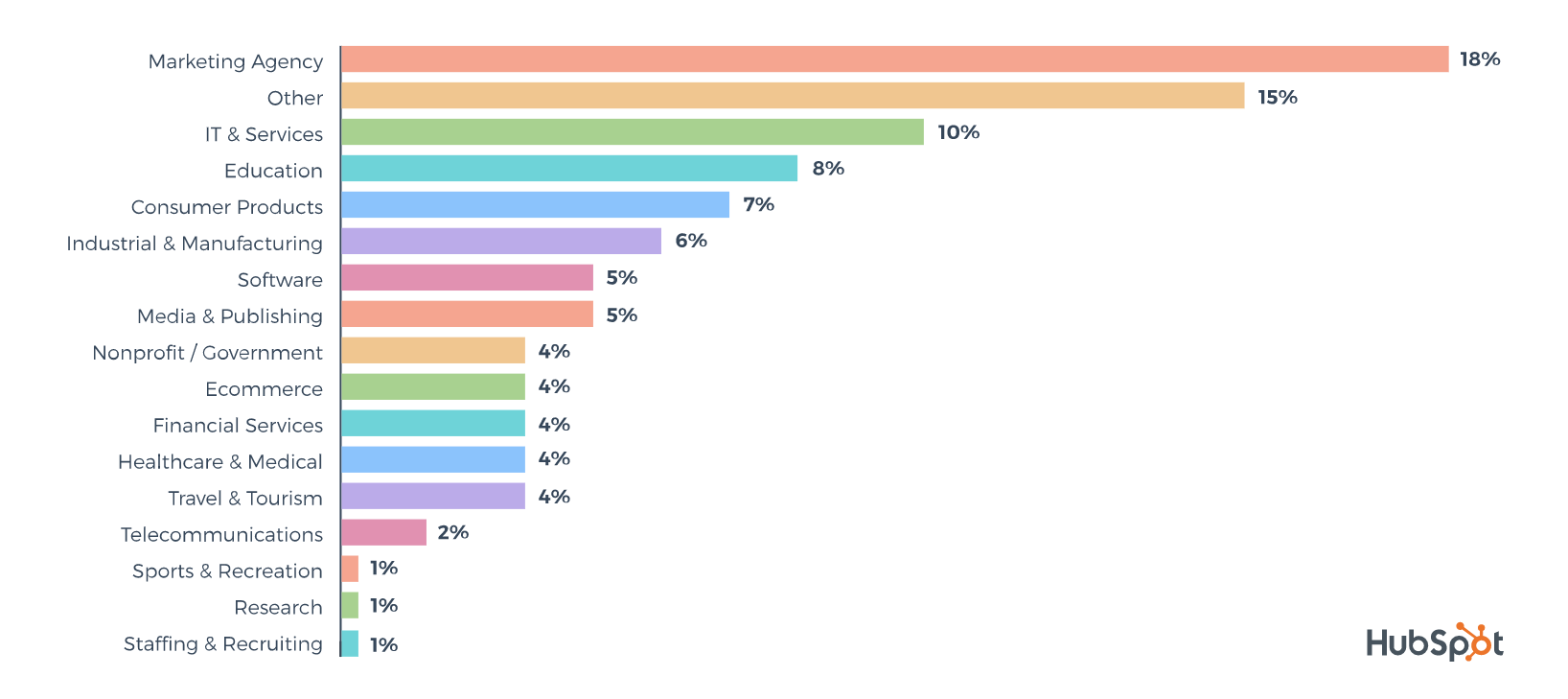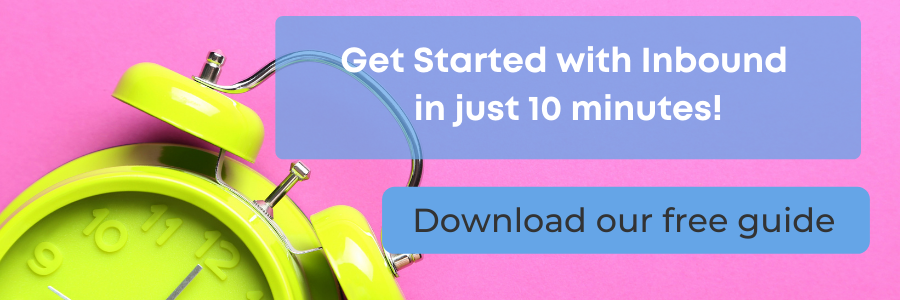When people try to pitch the basics of inbound marketing, they often fall back into using a lot of abstract terms and metaphors. While this can be useful to describe the psychology behind why it works (And we get it, this form of marketing is easy to wax poetic about), it can be frustrating when you’re short of time and want some of the cold, hard facts. If you’re a CEO, or are responsible for reporting to one, this post will help to answer those vital first questions and discover whether inbound could be right for your company.
As we go through the questions, several answers will start with some version of “well, it depends.” Don’t be put off. This isn’t us trying to be deliberately vague, it’s because there is a lot of variation depending on, for instance, the size of your business and the scope of the marketing campaign you wish to implement. Wherever possible, we’ll supply figures and give you as much information as possible to help you to place where your business is likely to fall within the range.
When Can I Expect Results?
Inbound is a slow burn strategy, but 80% of companies see a good increase of leads within seven months. There is a significant amount of planning and strategy to be done before inbound can get rolling. It takes time for SEO to take effect and for your content to gain traffic. The good news is that, unlike PPC, once you set up these strategies, they will continue to bring in leads for the long term, without much additional effort.
In most cases, you won’t see meaningful results in the first three to four months of an inbound campaign. After that, it's worth closely monitoring where traffic is starting to come in and the journey it went on to help guide you as to what appeals to your prospects. The average point at which slow, steady progress begins is between six and nine months after the inbound strategy begins. If you’re still struggling to see the difference after the 1-year mark, we recommend performing an audit or seeking guidance from a professional marketing agency to find out what’s behind the lack of progress.
What Results Can I Expect?
HubSpot recently surveyed its users and discovered the following.

The question is, how much of an increase? Concentrating on leads, HubSpot found that, on average, those with 6-20 starting leads had over 6 times as many after 6 months of using Inbound. After 12 months, they had almost 28 times as many as they had started with. Although those with a larger number of starting leads didn’t all achieve the same rate of growth, the results were still notable.
.png?width=500&name=Copy%20of%20Untitled%20(5).png)
How Much Resource does Inbound Require?
This varies depending on the scale of your endeavour and the skills and resource already at your disposal.
No matter the scale, the following will usually need to be covered in the initial set up.
- Identifying your buyer personas
- Setting smart goals for the campaign
- Create landing pages and a (Usually downloadable) asset
- Plan and create workflows to nurture your leads
- Make a content plan and write initial content
- Promote content through Social Media or advertising
- Set up tracking URLs
It’s possible you can stretch to accommodate this in-house, but often using agency services will have a lower cost, especially considering the extra value brought by their experience. They may also have access to useful tools and platforms for inbound and can help you with additional strategies that work well in conjunction with it, such as SEO (which isn’t quite the same as inbound) and PPC.
You should also go through all the materials your company has already created in the past, since transforming them may be easier than creating new content or assets from scratch. Once all this is set in motion, the workload is less heavy and the workflows you’ve created can take over to an extent.
Going forward, content will still have to be created and promoted, the success of the campaign will need to be tracked and, if you’re using PPC or SEO, this will need to be monitored too. This, of course, takes time and you may want to outsource some or all of these tasks, depending on whether you have an existing marketing team, what areas they specialise in, and the size of your budget.
How Much do I need to Invest?
Like with much of business, the more you invest in inbound, the more you can expect to get out of it. You can create social media posts and a blog on your website with relative ease, in fact you likely already have these, but if there isn’t a content strategy in place or the content is of substandard quality, you won’t see much ROI.
To hire an experienced marketing executive, you’ll be paying out a salary of 25-40k per annum. If you’re only outsourcing content, freelance writers charge varying prices per hour for content of varying quality. Finding the right one may take some trial and error.
Engaging an agency for a marketing retainer costs around £2,500-5,000. If someone is supporting the retainer in-house and you already have a strong website, brand and vision of your ideal customer, you can expect to be on the lower side of that range. If you require specialised support, a large quantity of content, or are visualising a high-budget ad campaign, you may end up paying more.
Some agencies offer fixed pricing, other produce bespoke campaigns and packages based on your needs, so you don’t pay for services you’re not using. Some price hourly, others price on a ‘points’ system, where different services cost different points.
If you’d like more information about how all this works, read our blog on inbound pricing.
One other area, besides the cost of people or agency support, that you need to consider is the platform or service you’ll be using to run your inbound campaigns. Investing in an integrated platform – like HubSpot or Marketo – will save you time and effort compared to using lots of different platforms, but there is an investment to be made.
Will it Work for my Business/Industry?
In this chart, HubSpot have laid out the industries covered by their current userbase.
It's worth noting that other businesses will also be utilising inbound through the marketing agencies that make up 18% of users, but this gives you an overall idea. Even if your industry isn’t largely represented among inbound users so far, it could still be a useful tool for your company.
The industries that record the biggest jump in their earnings through using inbound include
- Healthcare Providers
- Retail Businesses
- Professional services
- Insurance-based businesses
It makes particular sense to use inbound in industries with longer buying cycles, as this gives you more time to nurture your leads, which inbound excels at. Additionally, in cases where a business is based around complex concepts or technology (some fields of manufacturing, for instance), educating prospects on what you’re selling them can make a huge difference. Inbound is also shown to produce an increase in leads across both B2B and B2C industries.
.png?width=350&name=Copy%20of%20Copy%20of%20Untitled%20(2).png) A purely inbound campaign wouldn’t be the correct choice if your aim is something like attracting prospects to events at short notice. As we’ve discussed, it takes time for inbound to start producing leads. However, inbound tactics like the engaging, conversational use of social media channels can still help to establish your brand and build trust between you and potential customers.
A purely inbound campaign wouldn’t be the correct choice if your aim is something like attracting prospects to events at short notice. As we’ve discussed, it takes time for inbound to start producing leads. However, inbound tactics like the engaging, conversational use of social media channels can still help to establish your brand and build trust between you and potential customers.
How Can I Measure the ROI?
Assessing ROI for any form of digital marketing can be a challenge, but it's easier when you use a CRM like HubSpot. In your early days of inbound, you’ll need to concentrate on measuring traffic and leads. Even if your sales don’t rise instantly, if your inbound campaign works, your investment is being seen in the first months through rising brand awareness and credibility.
Once your campaign is really rolling, you need to start thinking in terms of revenue. You will still need to track which pages and platforms are bringing in leads and which offers are convincing them to convert. This gives you a picture of your most valuable assets so far and can allow you to recreate the success. It’s a similar story with prospects on the later stages of the buyer’s journey. Using platforms like HubSpot, you’ll be able to see how many leads opened the last email you sent out, how many subsequently became customers, and how much they invested.
All of this should give you a good insight into how well inbound is working for you and translating to money in the bank. Once patterns begin to form, you might be able to safely expect that a blog post on a particular topic will translate to a certain number of leads who convert into a certain number of customers. This helps you to continue to refine your strategy and make the most of your investments. The predictability may also make you feel safer to confidently scale up your marketing efforts as your business calls for it.
Is it all or nothing? Can we do some elements of inbound without others?
With
In short: yes, you can do some elements without others.
If you’re aiming for any form of inbound, it's advisable to still begin with creating buyer personas and smart goals and to create a content plan. How far-ranging that content plan is, whether you create landing pages, and to what extent you promote and track are up to you. However, it should be noted that, as a rule, the more elements you include, the more ROI you can expect.
You might find also find that aspects of the inbound route, like creating buyer personas, help to positively influence the outbound aspects of your marketing, like PPC or the targeting of your sales team. For this reason, when evaluating which elements to include, it’s worth thinking about the influence they could have beyond the goals of the inbound campaign.
When it comes to content, usually the more platforms you post across, the more reach you’ll have, but resources will always be limited, so pick what makes the most sense for you. Your legal firm probably doesn’t need to be active on TikTok if you know that your prospects spend the most time on LinkedIn.
Do we need Inbound if we're doing PPC?
Search Ads and inbound might have a shared aim of bringing prospects in from a google search, but they operate in different ways and can do different things for your business. At SpiderGroup, we feel inbound complements PPC very well and often use them together.
Firstly, they effectively cover each other’s shortcomings. PPC is fast acting and great for drawing in prospects. Ads distributed through social media are also effective at targeting consumers meeting precise criteria. However, PPC can become expensive and stops working the moment the money stops. Inbound, on the other hand, builds slowly in impact but its content keeps bringing in traffic over time with no additional investment from you.
When done well, Inbound content is also seen by consumers as less biased than advertisement, which helps them to build a grounded relationship with the company. While PPC works to inform potential clients about the concept of your business, it doesn’t give them enough information to develop trust. Once PPC draws prospects to your platform, the inbound content there builds you a credible and authoritative brand image.
The two strategies’ strengths also combine to produce more leads. Landing pages are a common element of the inbound strategy and they’re a great place for PPC to take customers in order to rapidly convert them. Creating buyer personas at the start of your campaign can help you walk in the shoes of your prospects and think up effective keywords and headlines for ads. PPC also provides valuable data about what your targeted audience find the most interesting, which can help you to plan future content that draws in more relevant traffic. To engage leads very early in their buyer’s journey, you could even use PPC to draw traffic to valuable pieces of content.
Conclusion
Inbound is an adaptable strategy but almost two decades past its inception, it’s also tried and tested enough that it has a certain predictability. You can have the luxury of knowing what to expect along the timescale if it's going well, and what adjustments have been shown to pay off if the campaign doesn’t progress as it should. This makes it feel like a safer investment of time and resources than it did before.
If you have any further questions about Inbound , we’d love to chat with you.



